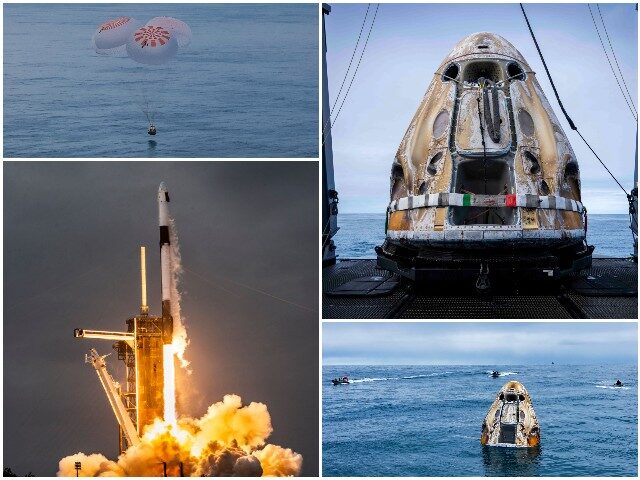A four-man SpaceX crew returned to Earth following a six-day delay at the International Space Station (ISS), leaving Florida residents confused about if they heard a “sonic boom.”
FOX 35 News received several reports from Cape Canaveral-area locals that a “sonic boom” or “explosion” was heard after SpaceX’s Dragon capsule splashed into coastal waters Friday morning, with some even saying that the impact shook their homes.
A sonic boom happens when an aircraft surpasses the speed of sound, creating a thunderous clap of noise.
The journey back down from the ISS after 20 days in space took nearly two days of flight travel after the crew had been stranded due to “bad weather in splashdown sites in the Gulf of Mexico and the Atlantic Ocean,” reported WFLA.
Despite what locals may have heard from the spacecraft, the Federal Aviation Administration (FAA) told FOX 35 that “only military aircraft create sonic booms.”
However, according to the local NBC affiliate, sonic booms are “increasingly common along Florida’s Space Coast.”
The Axiom-sponsored mission made history as the first all-European private astronaut crew to dock at the ISS, featuring commander Michael López-Alegría, co-pilot Walter Villadei, project astronaut Marcus Wandt, and mission specialist Alper Gezeravci.
The crew’s members, hailing from Italy, Turkey, and Sweden, took off from Kennedy Space Center in Florida on January 18.
After the ship landed, SpaceX co-founder Elon Musk said that Dragon “will take astronauts the furthest they’ve been from Earth in over half a century.”
NASA commemorated the mission in a press release, saying, “Supporting private astronaut missions is part of NASA’s strategy to create a vibrant commercial economy in orbit where the agency will become just one of many customers.”
“Low Earth orbit is now within humanity’s economic sphere of influence. It presents the best opportunities for the U.S. commercial space sector to capture new global and domestic markets and to provide critical capabilities to the nation’s space objectives,” said Phil McAlister, director of NASA’s commercial space division at NASA Headquarters in Washington.
“This ground-breaking Ax-3 mission is part of a larger effort, enabled by NASA, to open space to more people, more research, and more opportunities as the agency prepares for the transition to future private space stations at the end of this decade,” he concluded.

COMMENTS
Please let us know if you're having issues with commenting.